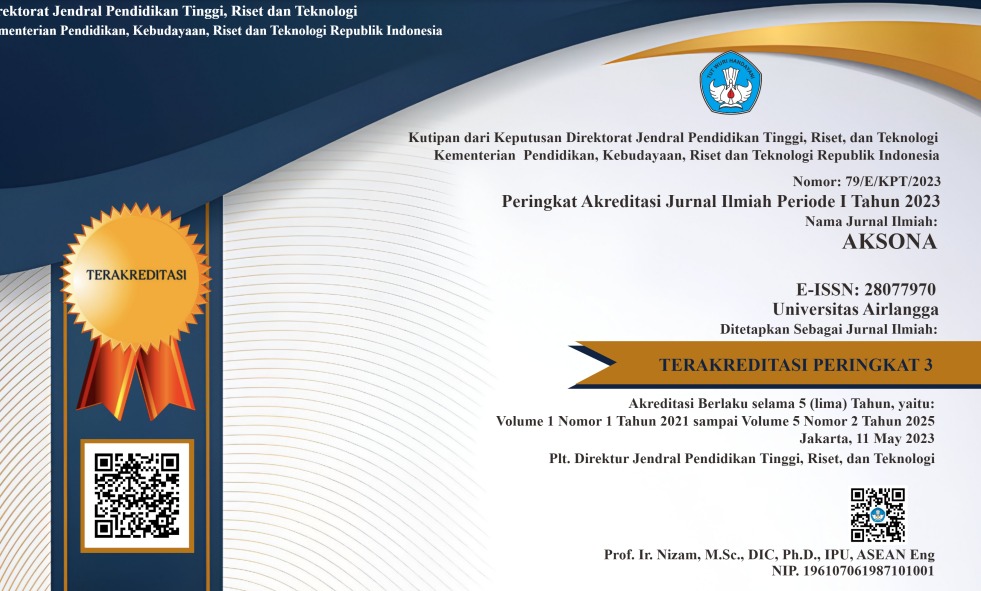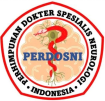Lambert-Eaton Myasthenic Syndrome: A Review of Rare Neuromuscular Disease Related to Paraneoplastic and Autoimmune
Downloads
Highlight:
- LEMS is a rare neurological disease with fluctuating symptoms
- Delays and misdiagnosis of LEMS disease often occur
- The two main pathophysiologies of LEMS are autoimmune and paraneoplastic.
ABSTRACT
A rare condition known as Lambert-Eaton myasthenic syndrome (LEMS) affects the neuromuscular junctions, which are the connections between muscles and nerves. Tumor-associated or autoimmune causes trigger this condition. This mechanism depends on the presence of antibodies that directly attach to voltage-gated calcium channels located on the presynaptic nerve terminals. LEMS disease is divided into non-paraneoplastic or non-tumor LEMS (NT-LEMS) and paraneoplastic LEMS (P-LEMS). NT-LEMS is believed to be caused by an autoimmune process. On the other hand, P-LEMS has an underlying tumor, and LEMS symptoms are paraneoplastic manifestations of the tumor. Clinical signs of LEMS include proximal muscle weakness, autonomic dysfunction, and decreased deep tendon reflexes. The predominant sign of LEMS is weakness of the lower extremities. The defining characteristic of LEMS is a weakness that spreads from caudal to cranial, causing oculobulbar manifestations, and from proximal to distal, potentially involving the feet and hands. The diagnosis of LEMS depends on clinical, electromyographic, and serological findings of anti-VGCC antibodies. Therefore, comprehensive oncologic screening and monitoring should promptly follow a diagnosis of LEMS. The standard approach to treating LEMS symptoms is administering drugs that improve neurotransmission, such as potassium channel blockers and amifampridine. In refractory cases, immunosuppressants or immunomodulator agents, such as a combination of prednisone and azathioprine, are used. If a tumor is detected, oncological therapy should be a priority.
Lehnerer S, Herdick M, Stegherr R, et al. Burden of disease in Lambert-Eaton myasthenic syndrome: taking the patient’s perspective. J Neurol. 2024;271(5):2824-2839.
Ivanovski T, Miralles F. Lambert-Eaton Myasthenic syndrome: early diagnosis is key. Degener Neurol Neuromuscul Dis. Published online 2019:27-37.
Meriney SD, Tarr TB, Ojala KS, et al. Lambert–Eaton myasthenic syndrome: mouse passive‐transfer model illuminates disease pathology and facilitates testing therapeutic leads. Ann N Y Acad Sci. 2018;1412(1):73-81.
Kesner VG, Oh SJ, Dimachkie MM, Barohn RJ. Lambert-Eaton myasthenic syndrome. Neurol Clin. 2018;36(2):379-394.
Tarr TB, Wipf P, Meriney SD. Synaptic pathophysiology and treatment of Lambert-Eaton myasthenic syndrome. Mol Neurobiol. 2015;52:456-463.
Schoser B, Eymard B, Datt J, Mantegazza R. Lambert–Eaton myasthenic syndrome (LEMS): a rare autoimmune presynaptic disorder often associated with cancer. J Neurol. 2017;264(9):1854-1863.
Mansukhani SA, Bothun ED, Diehl NN, Mohney BG. Incidence and ocular features of pediatric myasthenias. Am J Ophthalmol. 2019;200:242-249.
Jayarangaiah A, Lui F, Kariyanna PT. Lambert-Eaton Myasthenic Syndrome. In: StatPearls [Internet]. StatPearls Publishing; 2023.
Murai H. The Japanese Clinical Guidelines 2022 for Myasthenia Gravis and Lambert-Eaton Myasthenic Syndrome: An overview. Brain Nerve= Shinkei Kenkyu no Shinpo. 2024;76(1):7-12.
Abenroth DC, Smith AG, Greenlee JE, Austin SD, Clardy SL. Lambert–Eaton myasthenic syndrome: epidemiology and therapeutic response in the national veterans affairs population. Muscle Nerve. 2017;56(3):421-426.
Yoshikawa H, Adachi Y, Nakamura Y, et al. Nationwide survey of Lambert-Eaton myasthenic syndrome in Japan. BMJ Neurol Open. 2022;4(2).
Graus F, Vogrig A, Muñiz-Castrillo S, et al. Updated diagnostic criteria for paraneoplastic neurologic syndromes. Neurol Neuroimmunol Neuroinflammation. 2021;8(4):e1014.
Nicolle MW. Myasthenia gravis and Lambert-Eaton myasthenic syndrome. Contin Lifelong Learn Neurol. 2016;22(6):1978-2005.
Bekircan-Kurt CE, Çiftçi ED, Kurne AT, Anlar B. Voltage gated calcium channel antibody-related neurological diseases. World J Clin Cases WJCC. 2015;3(3):293.
González CS, Vivero CM, Castro JL. Paraneoplastic syndromes review: The great forgotten ones. Crit Rev Oncol Hematol. 2022;174:103676.
de Souza FF, Trevisani JP, dos Reis FI. Clinical, Pathophysiological and Electrodiagnostic Aspects of Lambert-Eaton Myasthenic Syndrome. In: Topics in Autonomic Nervous System. IntechOpen; 2023.
Rodríguez Cruz PM, Cossins J, Beeson D, Vincent A. The neuromuscular junction in health and disease: molecular mechanisms governing synaptic formation and homeostasis. Front Mol Neurosci. 2020;13:610964.
Muñiz-Castrillo S, Vogrig A, Honnorat J. Associations between HLA and autoimmune neurological diseases with autoantibodies. Autoimmun Highlights. 2020;11:1-13.
Zalewski NL, Lennon VA, Lachance DH, Klein CJ, Pittock SJ, Mckeon A. P/Q‐and N‐type calcium‐channel antibodies: oncological, neurological, and serological accompaniments. Muscle Nerve. 2016;54(2):220-227.
Hemati M, Esmaeli NS, Asadi S. The Role of Mutations on HLA Genes in Lambert-Eaton Myasthenic Syndrome. Ann Case Rep. 2021;6:710.
Young JD, Leavitt JA. Lambert–Eaton myasthenic syndrome: ocular signs and symptoms. J Neuro-ophthalmology. 2016;36(1):20-22.
Bispo BA, Aguiar PHSP de, Caso AC, et al. Management and pathophysiology of meningiomas during pregnancy. Literature review and case report. Jbnc - J Bras Neurocir. 2022;32(4):379-388. doi:10.22290/jbnc.v32i4.1989
Li H, Zhang A, Hao Y, Guan H, Lv Z. Coexistence of Lambert–Eaton myasthenic syndrome and autoimmune encephalitis with anti-CRMP5/CV2 and anti-GABAB receptor antibodies in small cell lung cancer: A case report. Medicine (Baltimore). 2018;97(19):e0696.
Merino-Ramírez MÁ, Bolton CF. Review of the diagnostic challenges of Lambert–Eaton syndrome revealed through three case reports. Can J Neurol Sci. 2016;43(5):635-647.
Oh SJ. Distinguishing features of the repetitive nerve stimulation test between Lambert–Eaton myasthenic syndrome and myasthenia gravis, 50-year reappraisal. J Clin Neuromuscul Dis. 2017;19(2):66-75.
Sanders DB, Cao L, Massey JM, Juel VC, Hobson-Webb L, Guptill JT. Is the decremental pattern in Lambert–Eaton syndrome different from that in myasthenia gravis? Clin Neurophysiol. 2014;125(6):1274-1277.
Sun X, Tan J, Sun H, et al. Anti-SOX1 antibodies in paraneoplastic neurological syndrome. J Clin Neurol. 2020;16(4):530.
Bodkin C, Pascuzzi RM. Update in the management of myasthenia gravis and Lambert-Eaton myasthenic syndrome. Neurol Clin. 2021;39(1):133-146.
Pascuzzi RM, Bodkin CL. Myasthenia gravis and Lambert-Eaton myasthenic syndrome: New developments in diagnosis and treatment. Neuropsychiatr Dis Treat. Published online 2022:3001-3022.
Yoon CH, Owusu-Guha J, Smith A, Buschur P. Amifampridine for the management of Lambert-Eaton myasthenic syndrome: a new take on an old drug. Ann Pharmacother. 2020;54(1):56-63.
Shieh P, Sharma K, Kohrman B, Oh SJ. Amifampridine phosphate (Firdapse) is effective in a confirmatory phase 3 clinical trial in LEMS. J Clin Neuromuscul Dis. 2019;20(3):111-119.
Bakker WR, Remijn-Nelissen L, Schimmel K, Tannemaat M, Verschuuren J, van Gelder T. Pharmacological treatment of Lambert-Eaton Myasthenic Syndrome. RRNMF Neuromuscul J. 2023;4(3).
Wiendl H, Abicht A, Chan A, et al. Guideline for the management of myasthenic syndromes. Ther Adv Neurol Disord. 2023;16:17562864231213240.
Rohrer L, Yunce M, Montine TJ, Shan H. Plasma exchange in Alzheimer’s disease. Transfus Med Rev. 2023;37(1):10-15.
Maddison P, Lipka AF, Gozzard P, et al. Lung cancer prediction in Lambert-Eaton myasthenic syndrome in a prospective cohort. Sci Rep. 2020;10(1):10546.
Copyright (c) 2025 Ichlasul Mahdi Fardhani, Cindy Graciella, Muhammad Isra Rafidin Rayyan

This work is licensed under a Creative Commons Attribution-ShareAlike 4.0 International License.





















